When we think of Tamil Nadu, we think of the ancientness of its temples. And, when it comes to ancient temples we think of the Brihadisvara Temple in Thanjavur (Tanjore) most of all.
Some temples, like the UNESCO World Heritage Shore Temple in Mamallapuram, are not used for daily worship. They are places to bear witness to the past. Calm and peaceful, they are thousand-year-old marvels of art and architecture.
You can place your hands on the carvings and imagine the hand that held the chisel all that time ago. You feel the minuteness of our lives compared to the lasting forms of these stones and temples. All temples have that sort of power but not every ancient place still feels alive.
The Brihadisvara Temple in Thanjavur (Tanjore) is a living temple. It’s feels like a briskly busy ant hill from dawn until dusk. Not bad for a place that’s been open for business since 1010 C.E.
Visiting the temple
When we arrived in Thanjavur, sunset was close. If you can arrange it, this is a magical time of day to visit.
Locals, done with their work, are getting in their daily visit—or maybe even a second one. Chai and snack wallah (worker) stalls line the parking lot. Flower kiosks selling garlands and prasadam (temple offerings) line the long wide walkway to the walled entrance.
Our advice: follow the throngs through the barrel vaulted goparums (gateways) instead of stopping the flow to stare at those architectural feats (you’d get runover!). Carry on with the mundane task of storing your shoes where everyone else is storing theirs. It’s all good. You’ll all burst inside the temple walls at the same time.
And, what hits you immediately when you reach the other side is the gob-smacking scale and geometry of the place. This view has likely gob-smacked every temple-goer that’s entered for the last thousand years.
What lies before you
This is the seventh largest Hindu temple in the world. Brihadisvara, which translates to “great lord – big Shiva temple,” is a vast 102,400 square metres. That’s the size of 19 NFL football fields.
The Vimana (tower) over the sanctum sanctorum is 66 metres tall and made of solid granite. The fact it was built between 1003 and 1010 by Raja Raja Chola of the Chola dynasty speaks to the mastery of early Dravidian architects.
This is a Shiva temple
There are three main Hindu Gods. Brahmin is the Generator. Vishnu is the Organizer. Shiva is the Destroyer. Together they, and all the other 30 plus million Gods in Hinuism, make up one GOD – one creator.
But, Shiva is most important. The word Shiva translates to “no-thing” or that which is not. The belief goes that life came from”no-thing” and will return there.
According to Sadhguru, “A temple is a hole through which you enter into a space which is not. There are thousands of Shiva temples in the country, and most of them don’t have any form (to worship) as such. They just have a representative form and generally it is a linga.” Linga’s are ellipsoid in shape and physicists now believe the universe is this shape as well.
In Hinduism, the belief is we all came from that which is not. When we use up our karma we’ll be free of this life and attain nirvana or a return to that state – a oneness with life itself.
Shiva temples were built as places for people to recharge – to just sit and absorb energy or dissolve. At Brihadisvara Temple in Thanjavur (Tanjore), the massive quadrangle holds halls for the Shiva linga statue that represents Shiva’s energetic presence and for Nandi, Shiva’s ever present transport in the form of a bull. The Nandi statue is a 25-ton single stone. The Shiva lingum is 8.7 metres high.
There are also shrines for Shiva’s wife Parvati and for their children Ganesha and Kartikeya along with many other important deities. The halls are decorated with frescoes and elaborate carvings. A bronze statue of Shiva in the form of Nataraja—lord of the dance—was commissioned in the 11th century.
Memories from our visit
We spent a few hours here and were reluctant to leave. Though the compound is immense, there are alcoves and steps where you can rest.
You can find a quiet spot to meditate either in the pavilion that serves as a public gathering space or along the perimeter which is covered in porticos with decorative pillars to support them.
For photographers, there are many angles to capture the light. It plays on the structures and the faces.
Foreigners are not as common here as in other parts of India. All that is needed is a smile and soon you’ll be taking part in a mutual selfie fest. Selfies are a cross-cultural ice-breaker and they always lead to mutual laughter.
Most South Indians, and Indian tourists from other parts of the country, know some English and like to chat. Even if you only know Namaste, Nammaskaram or Vannakom (Hindi, Mallayallam and Tamil greetings), your willingness to communicate in some form of Indian language will impress your new friends.
Beyond the people and the beauty of the pink rays of the setting sun hitting Brihadisvara’s pyramid-like Vimana, there is another memory that we’ll always retain from our visit here. It came from the ground up and is stored in every cell of our bodies.
The granite stones that make up the quadrangle’s courtyard are smooth and pebble free. One of the greatest pleasures in India is to walk bare foot on such stones after they’ve soaked up a day’s worth of solar energy.
The transfer of heat travels up through the bones and feels like energy is being radiated from the earth’s core into the core of your being. Never before or since, have we felt the earth’s energy vibrate so soothingly as we did in this ancient place in Thanjavur. Now that’s a warm memory.
Gratitude
We are deeply grateful to our Travel XS guide Charles for making sure Brihadisvara Temple in Thanjavur (Tanjore) was included in one of our visits to South India. We hope, if you go, you’ll find it as enjoyable as we did.
Note: This is an unsponsored post based on an independent visit in 2014.

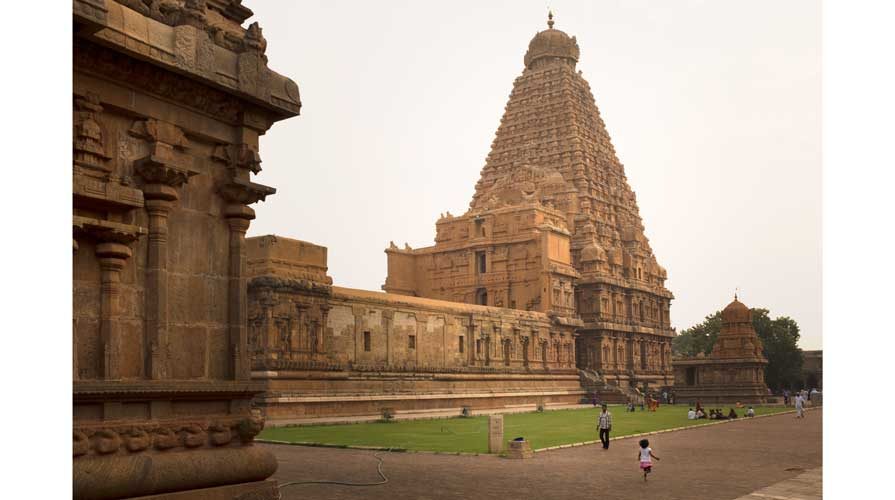
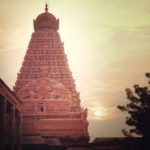

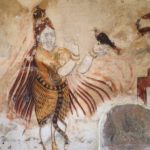
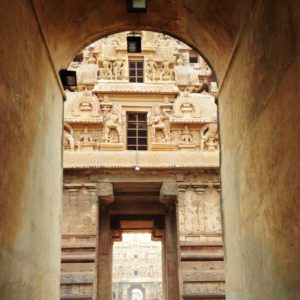
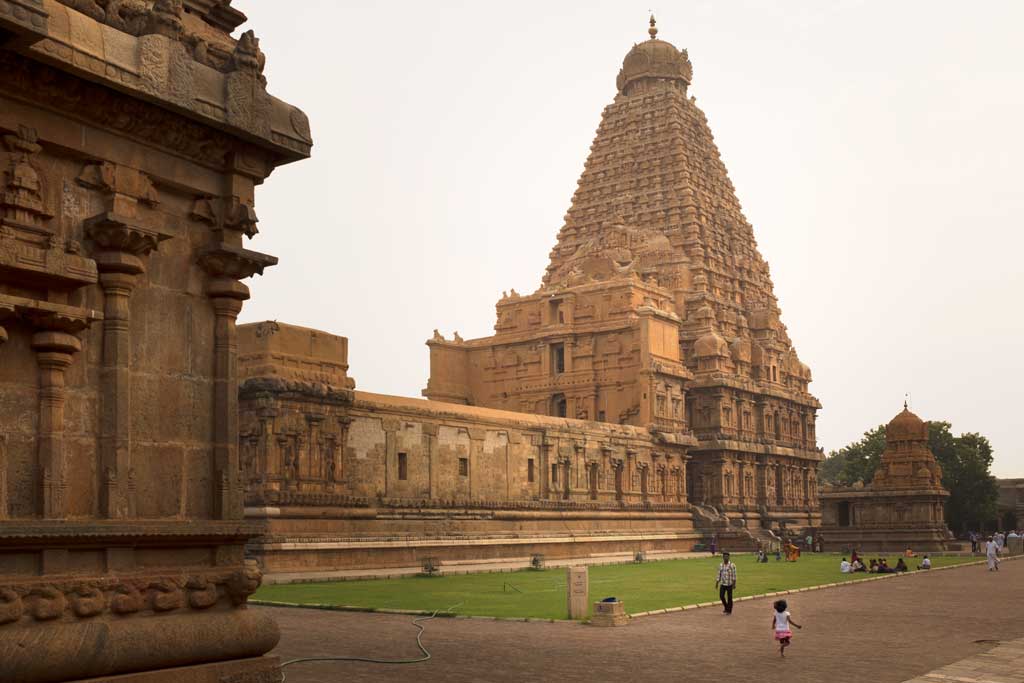
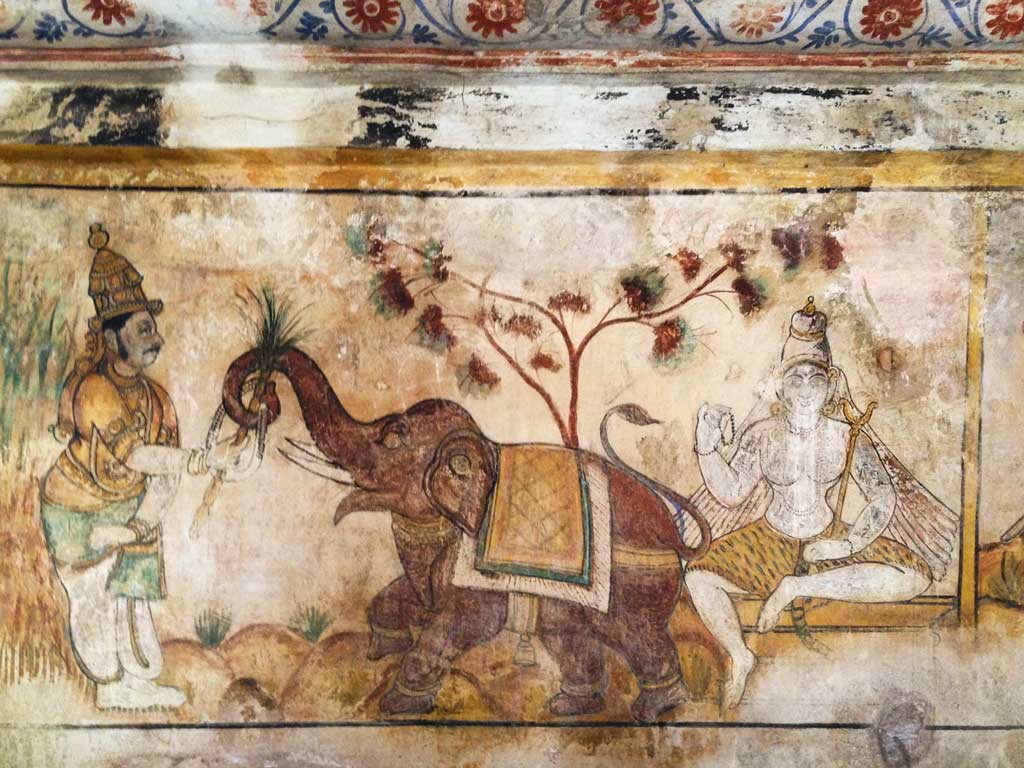
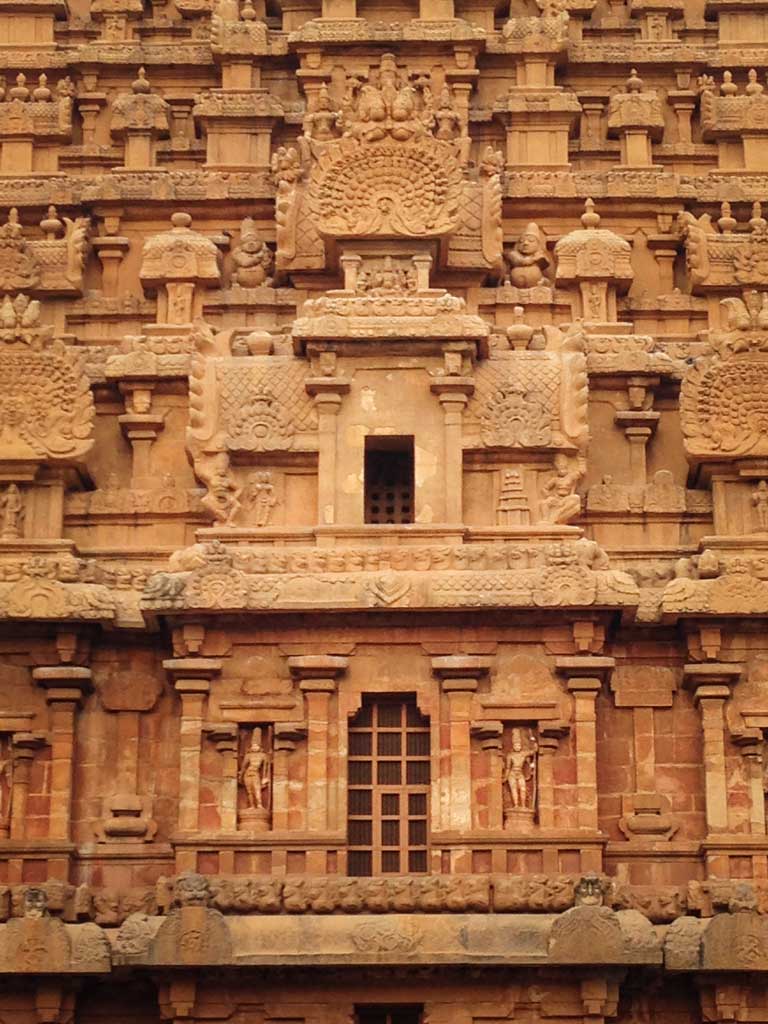
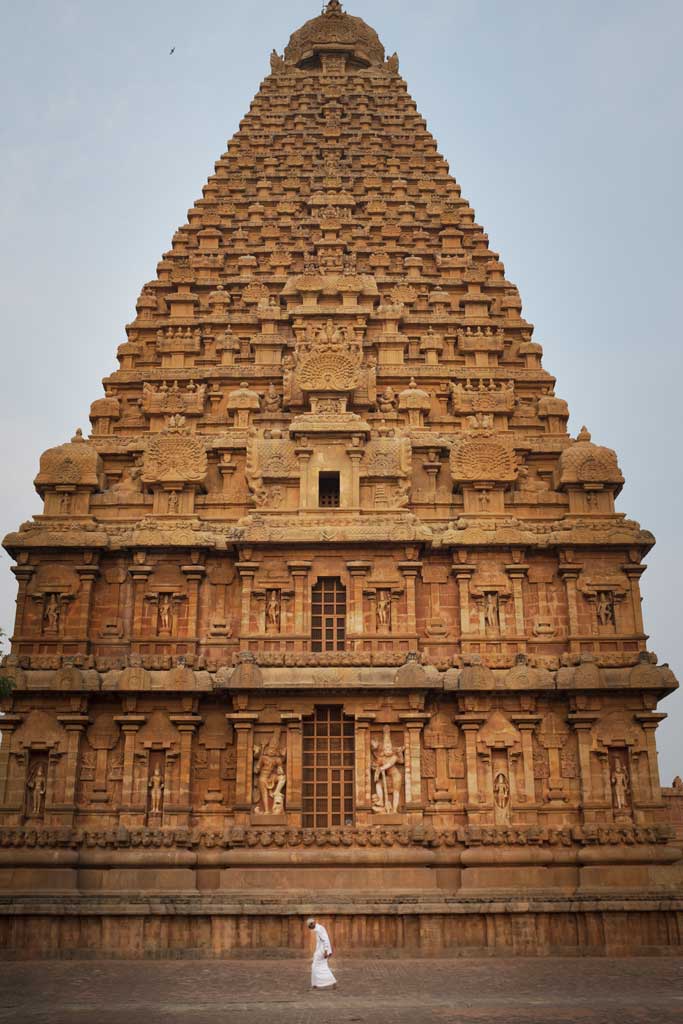
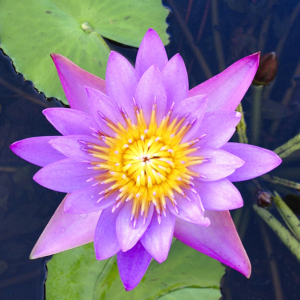
What a beautifully vivid description of the Brihadisvara Temple! The intricate details and personal experiences truly bring the place to life. It’s inspiring to read about the temple’s grandeur and the profound sense of history and spirituality it evokes. This post makes me eager to experience the magic of Thanjavur myself someday!